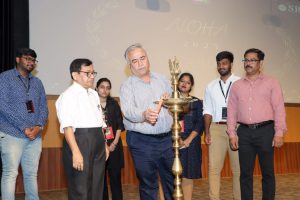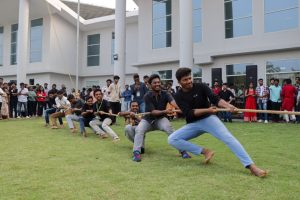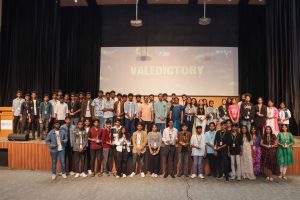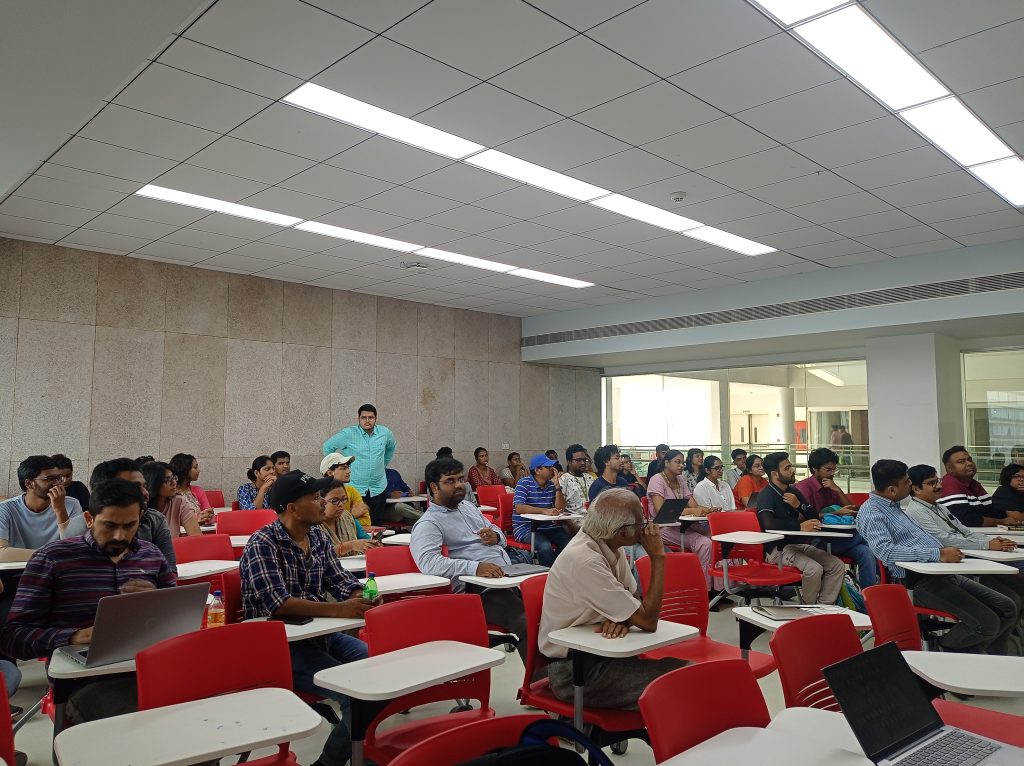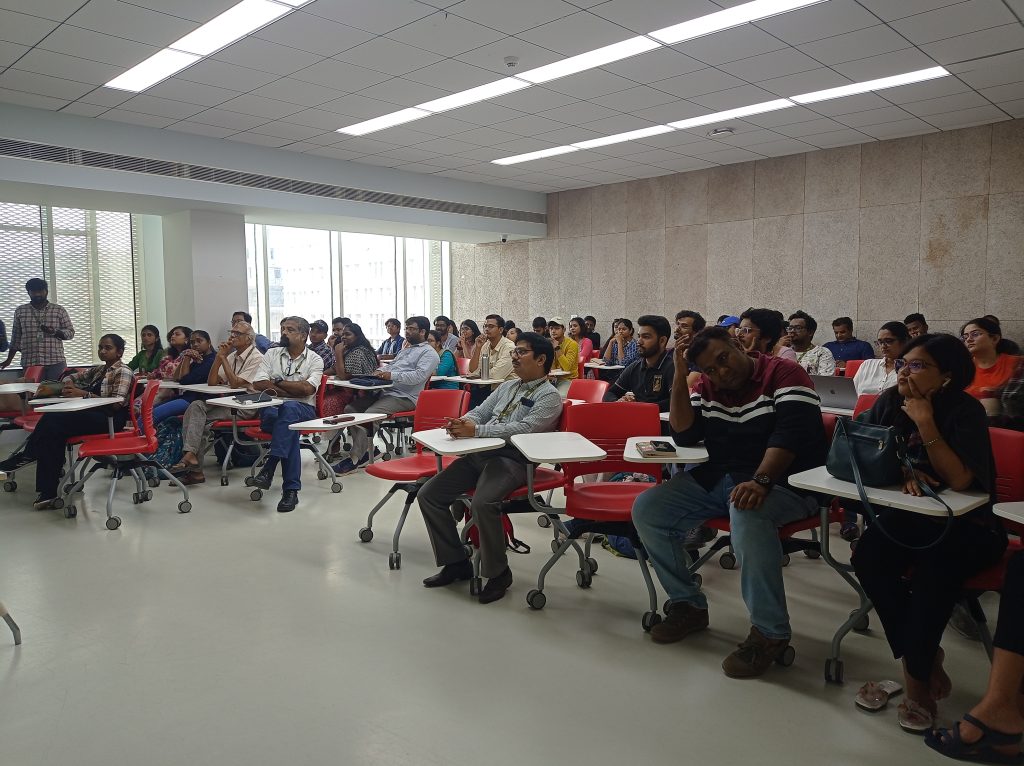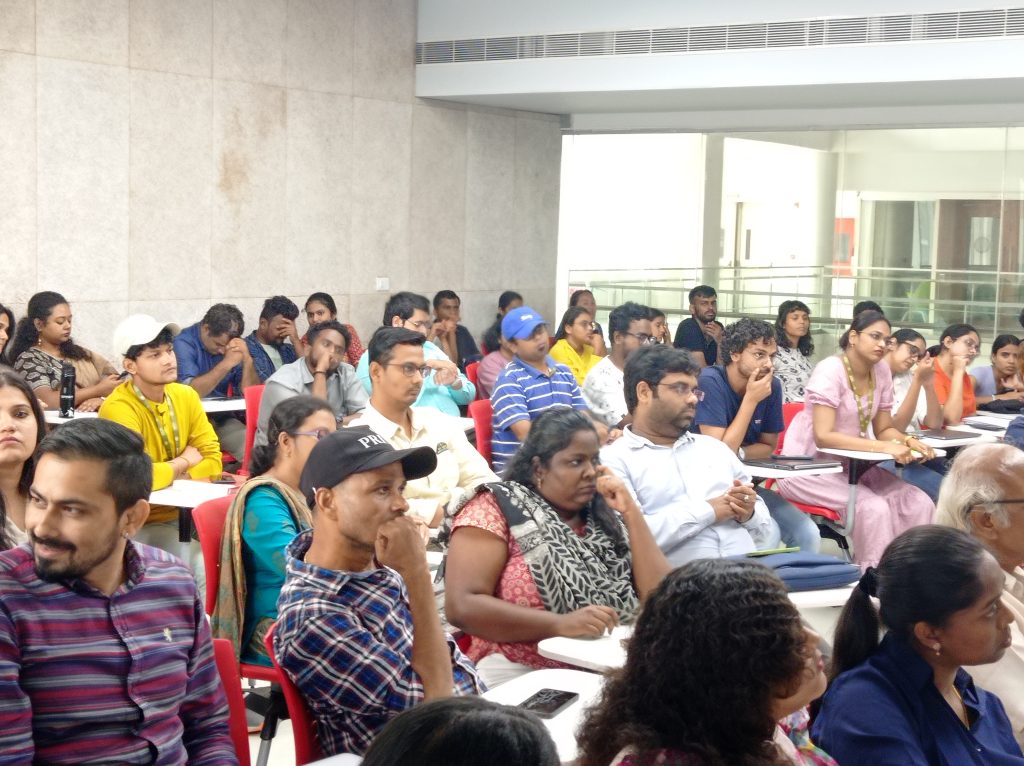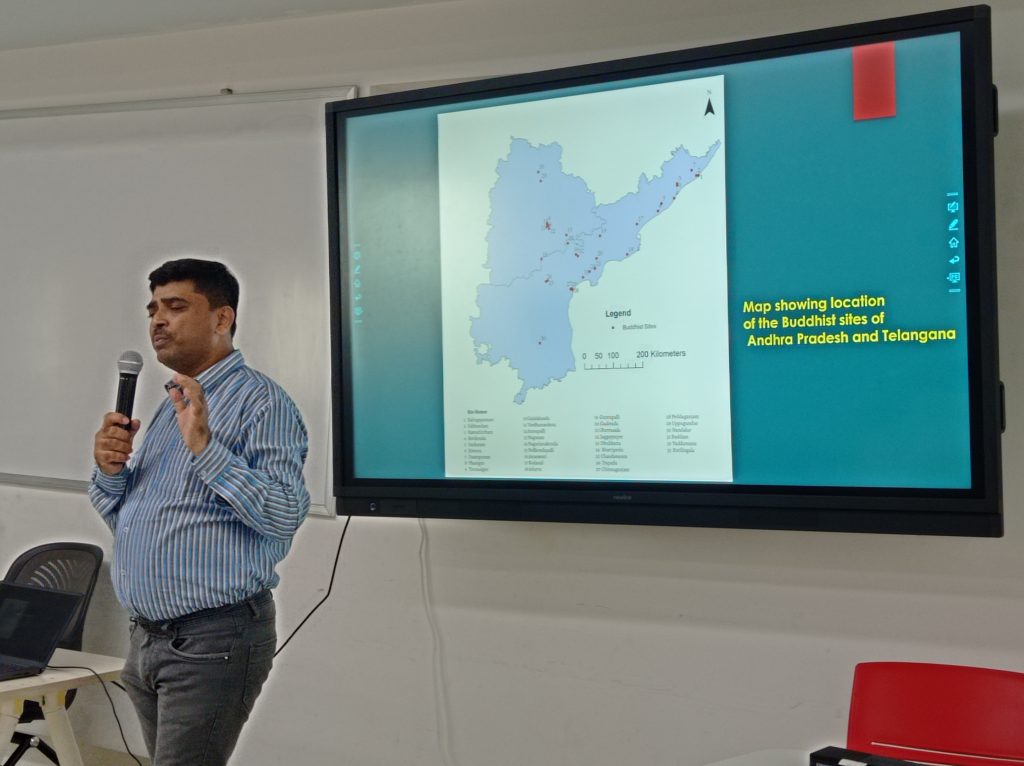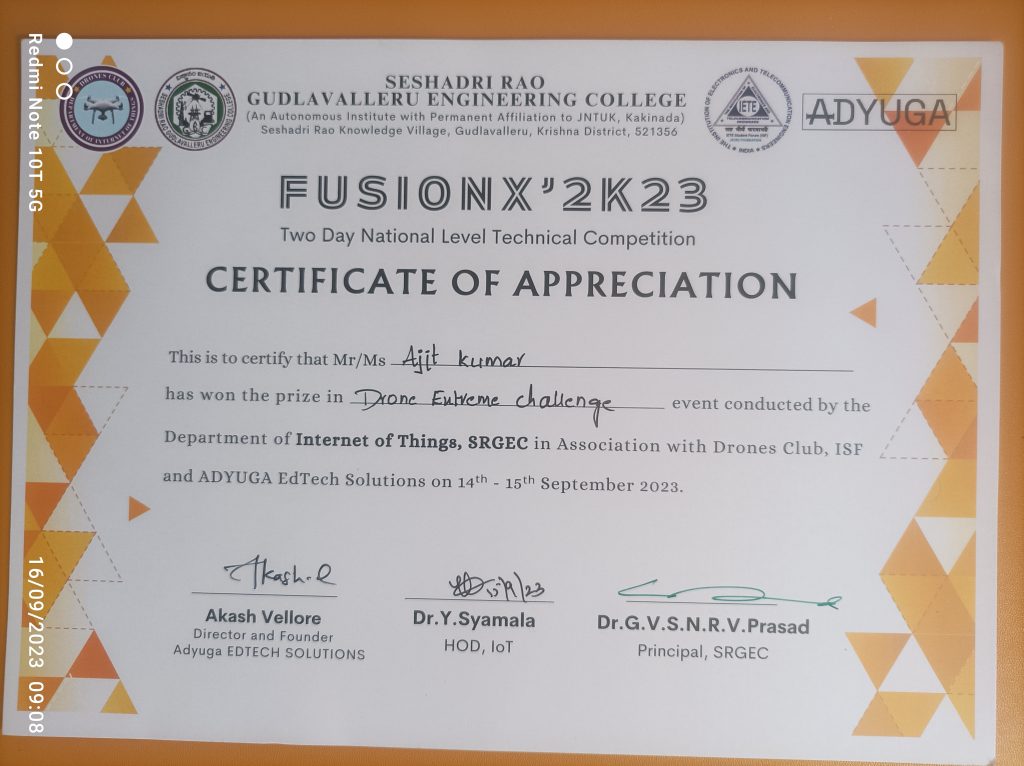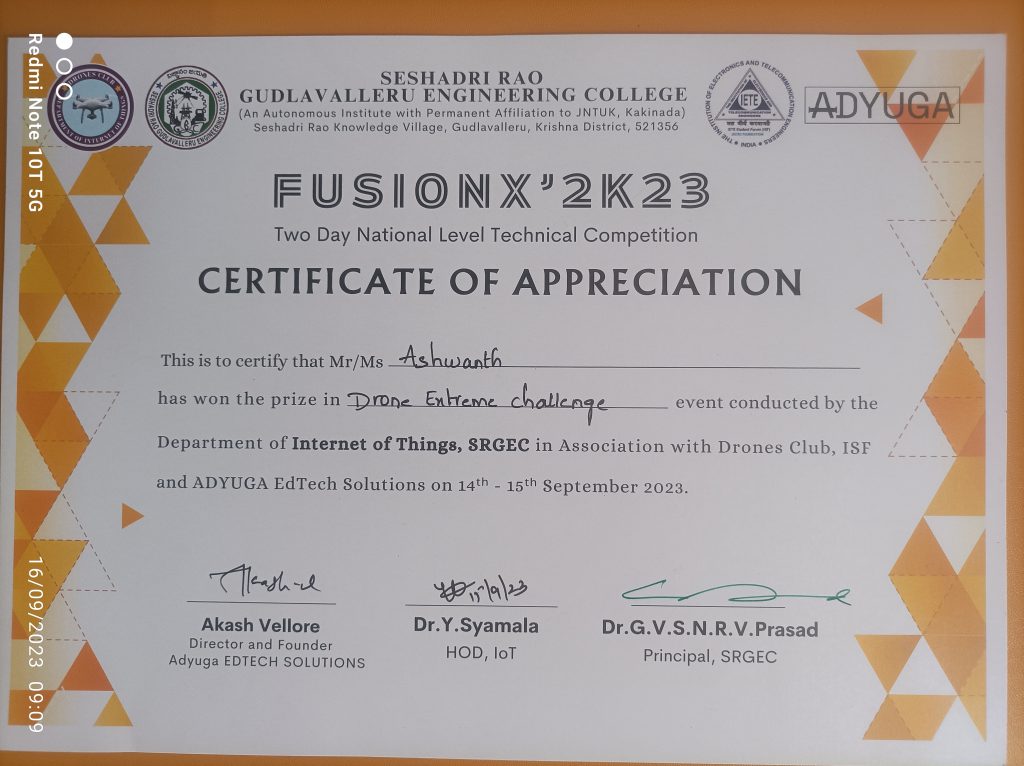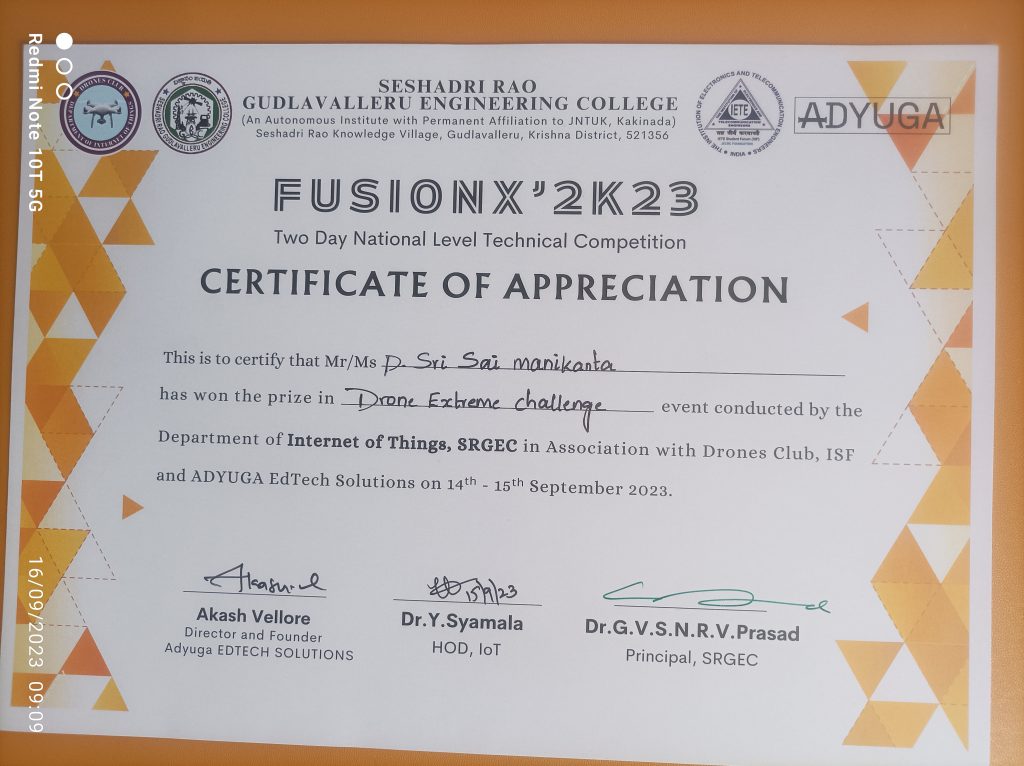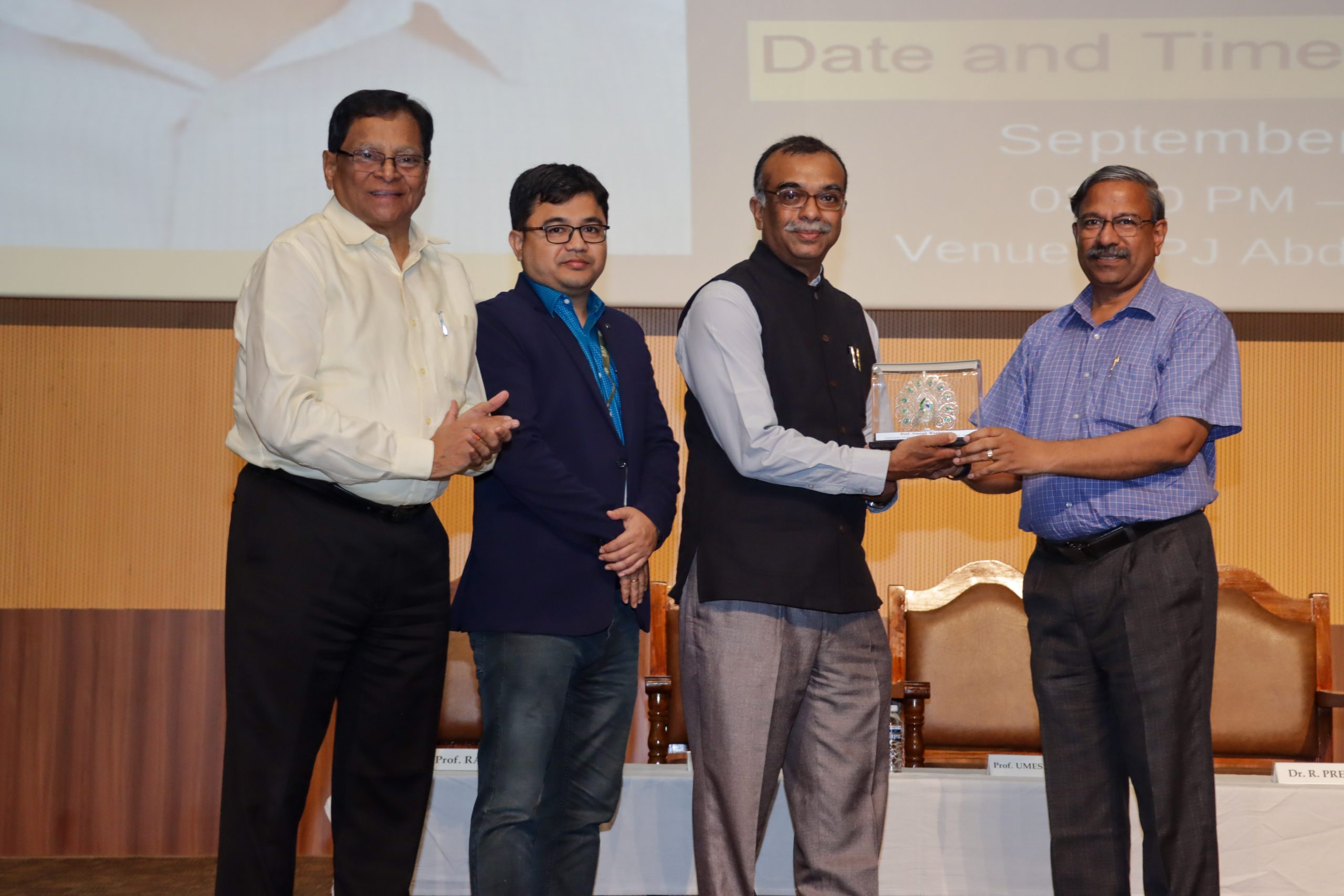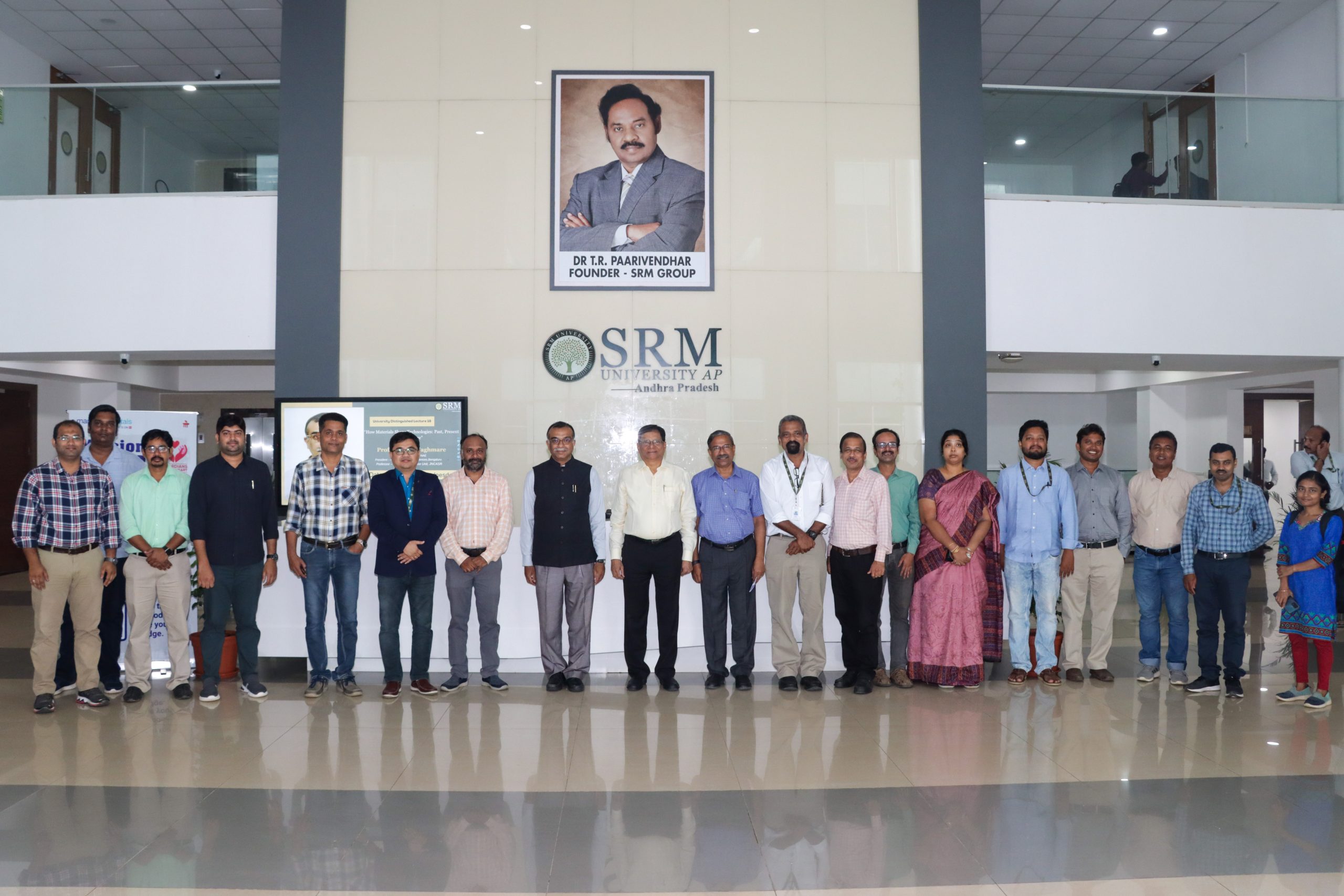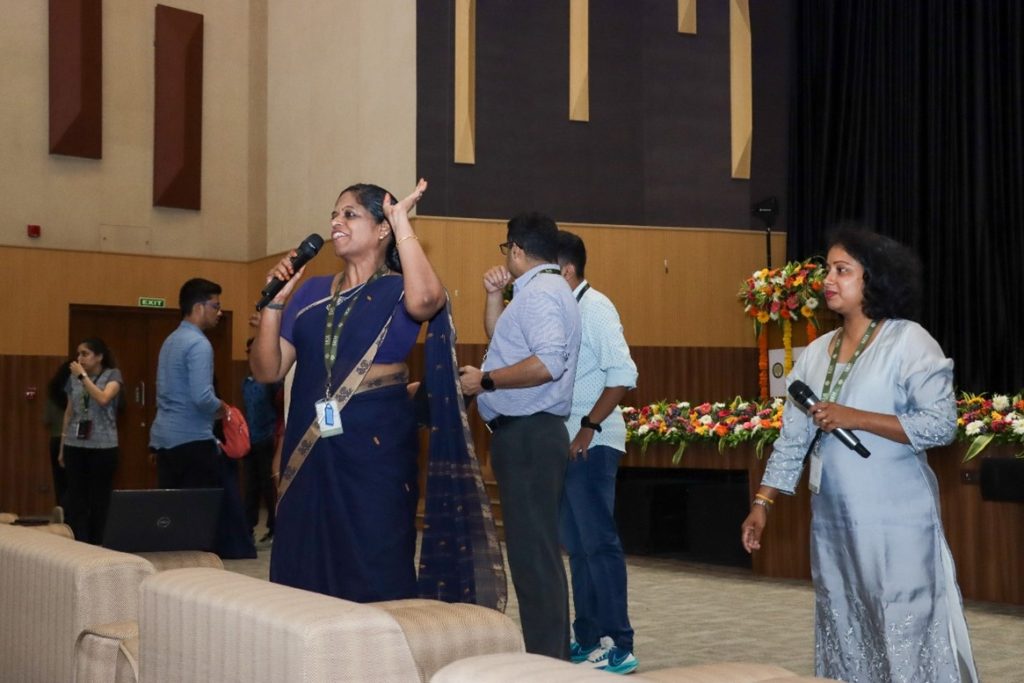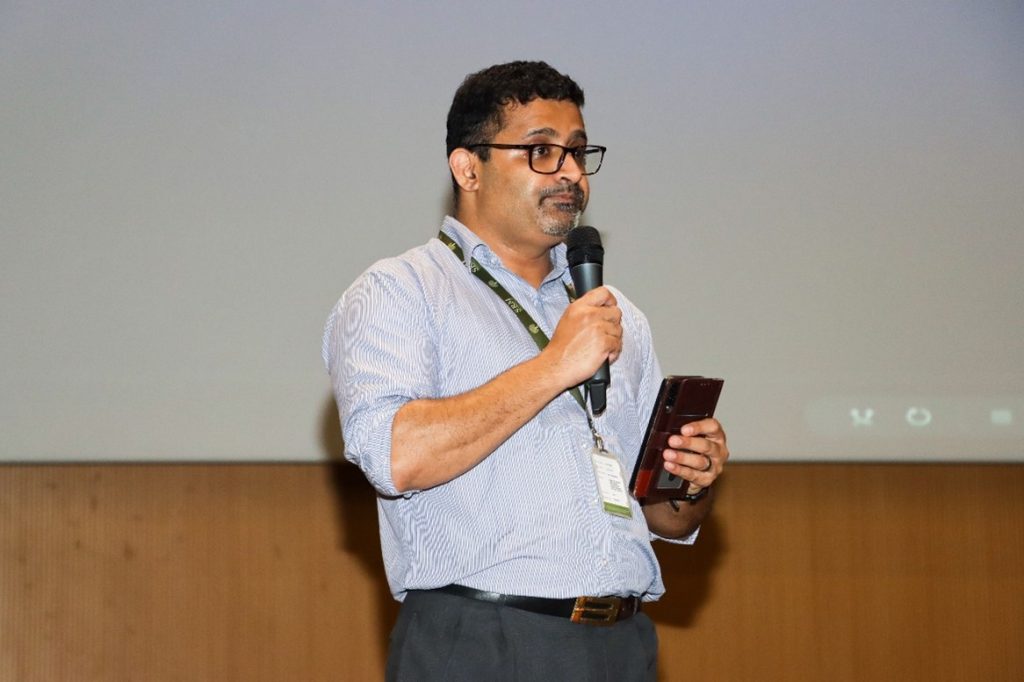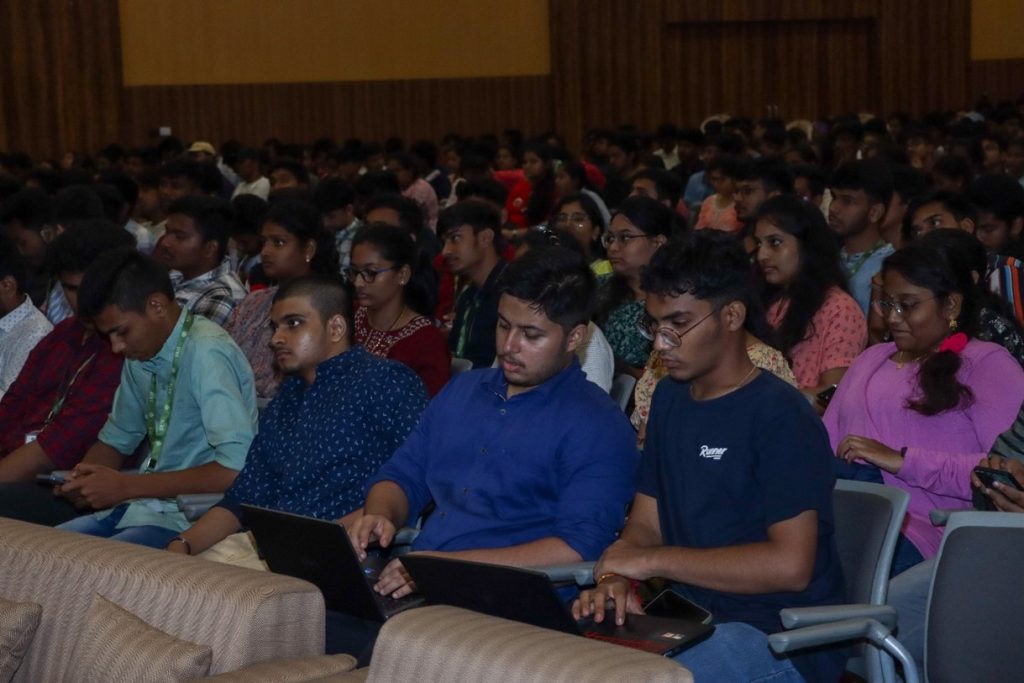SRM-AP All News
ALL News
- IIT Bombay Professor Delivers Distinguished Lecture at SRM University-AP October 17, 2023
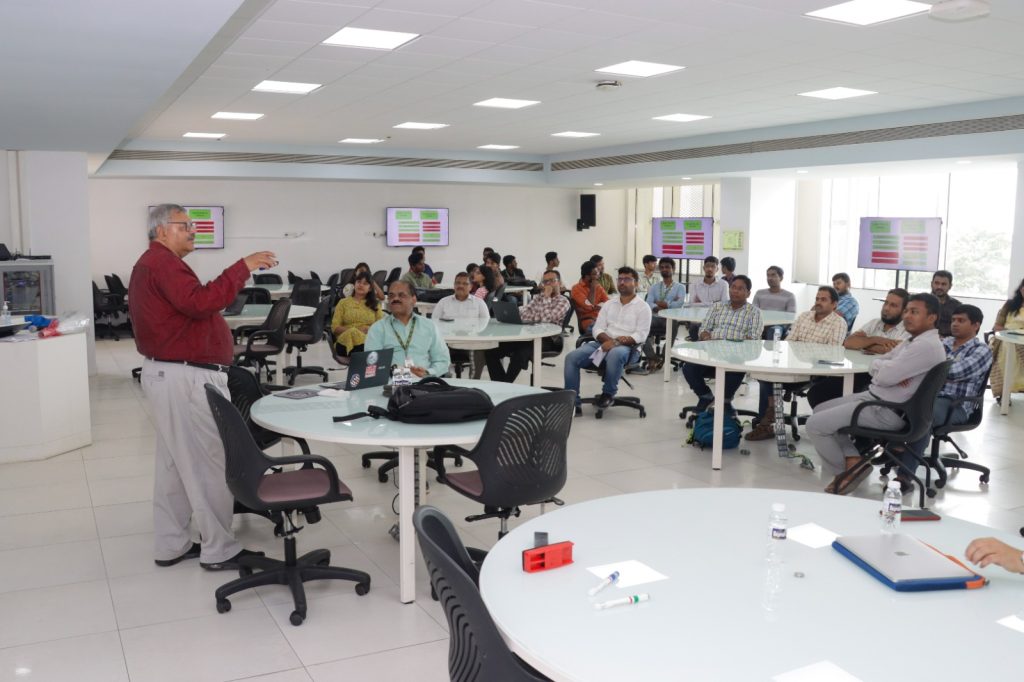
“If we start working today towards developing LTA systems, in 10 years India will lead the sustainable air transportation” esteemed academician, Prof. Rajkumar S Pant, Professor of Aerospace Engineering stated in his lecture at SRM University-AP. The seasoned expert from the prestigious institute of IIT Bombay delivered a lecture on “The Design and Development of Lighter Than Air Systems” at SRM university-AP on October 16, 2023, as part of the Distinguished Lecture Series 2023 organised by the Department of Mechanical Engineering. The lecture extensively discussed the latest developments in the area of conceptual design, sizing, design, development and flight/field testing of LTA Systems.
In his lecture, Prof. Pant encouraged students to explore the dynamics of Lighter Than Air Systems, beginning with aerostats and then gradually proceeding to more complex airships. The session highlighted the disaster of Hindenburg, breaking the myth that airship transportation is dangerous and unreliable. Prof. Pant engaged the session with video presentations on the building, developing and working of airships and aerostats that have been conducted at the Lighter-Than-Air Systems Laboratory of IIT Bombay. His lecture also showcased some of the research and development activities that have been carried out in the LTA Systems Laboratory of IIT Bombay including Project HERCARA, and other projects carried out in collaboration with ISRO and DRDO.
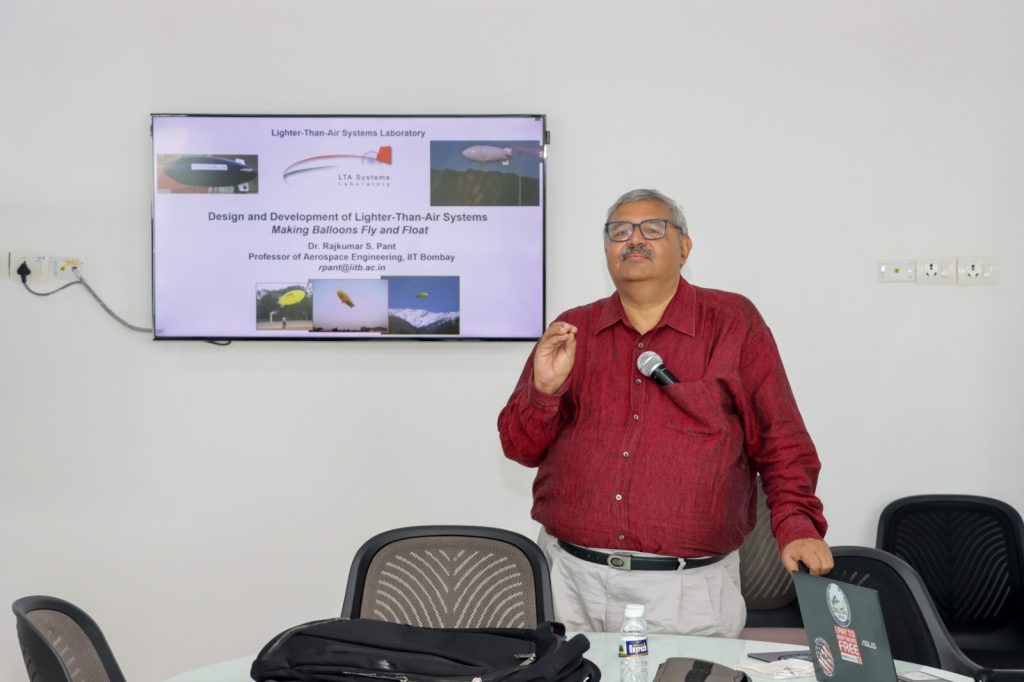
The distinguished lecture was followed by a workshop on “Sizing of Reusable Indoor Hot Air Balloon (RIHAB)”. The workshop provided the students with practical knowledge and hands-on experience on LTE systems and vehicles inducing research interest in the domain of aerospace engineering and sustainable air transportation. Prof. Ranjit Thapa, Dean – Research, Prof. Prakash Jadhav, Head – Department of Mechanical Engineering, faculty and students at the university actively participated in the lecture and the workshop.
Continue reading → - ALOHA 2023: The Party of The Year Concludes With a Bang October 17, 2023
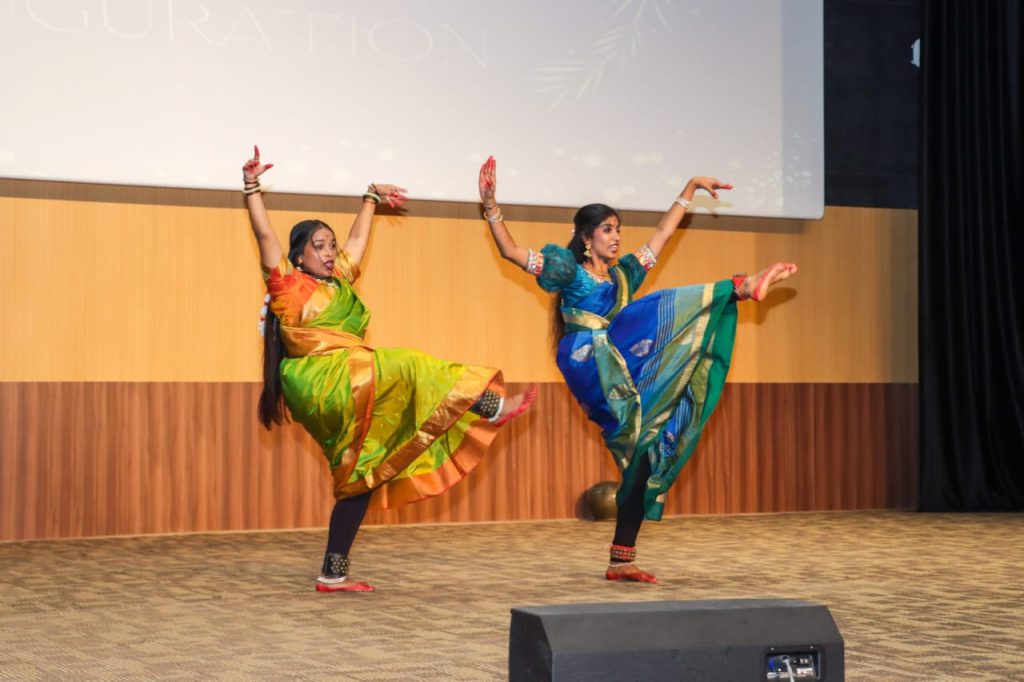
SRM University-AP successfully concludes its Freshers’ Party of the year, ALOHA 2023, with extravagance. The two-day freshers’ event was inaugurated by Vice Chancellor, Prof. Manoj K Arora on October 13, 2023, in the presence of Director of Student Affairs, Mr Anil Kumar Nigam, Asst. Director of Student Affairs, Ms Revathi Balakrishnan, Visiting Professor-Paari School of Business, Prof. Prabal K Sen, and the President and Vice President of the Student Council.
“The word ‘Aloha’ embodies compassion and kindness. We welcome you to your second home, SRM University-AP where we will nurture you to be holistic individuals throughout your academic journey” stated Prof. Arora in his inaugural address. The Director of Student Affairs welcomed the freshers into the academic and social community of the university. “SRM University-AP is a place for creating friendships, exploring your potential and being the best version of yourself!” Mr Nigam addressed the freshers.
ALOHA featured a Mr and Ms Freshers’ Contest that witnessed a spectacular display of talent by the students of SRM University-AP. Dhruv Narayan Bajaj and Vaishnavi Kasturi were crowned as the Mr and Ms Fresher of 2023, respectively. Various creative club activities and competitions from photography to dance and music, to anime quiz and cubing, and traditional games such as tug-of-war and Dahi Handi are some of the innumerable activities conducted as part of the freshers’ programme. The event successfully concluded with an exclusive DJ party featuring Project 91, Prithvi Sai and international artist DJ Pozitiva.
Continue reading → - Discourse on Buddhism provides Valuable Insights October 16, 2023
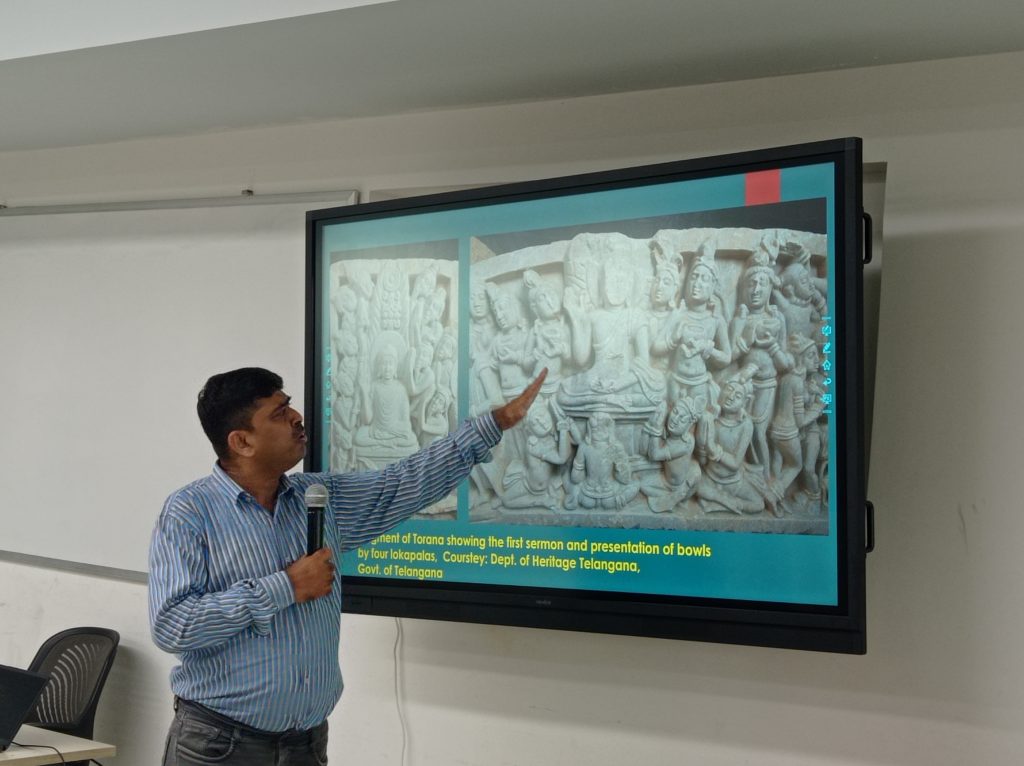
Dr Shrikant Ganvir, Assistant Professor in Ancient Indian History, Culture, and Archaeology from Deccan College Post Graduate Research Institute, Pune, delivered an invigorating session organised by the Department of History at SRM University-AP on October 11, 2023. Dr Ganvir’s session dealt with Buddhist studies, particularly of the Andhra region, and he has extensively worked on sites like Phanigiri, Salihundam, Amaravati, Guntapalli, and likewise.
Dr. Ganvir specialises in Buddhist art, architecture, and iconography. His area of expertise includes the religious history of Deccan, the history of Buddhism in South Asia, the rock-cut architecture of the Deccan, the religious imagery of ancient India, and the archaeology of religions. His broad knowledge in these fields allowed him to share enlightening insights with his audience.
Continue reading → - Unlocking Opportunities: A Glance at Education Expo 2023 October 13, 2023
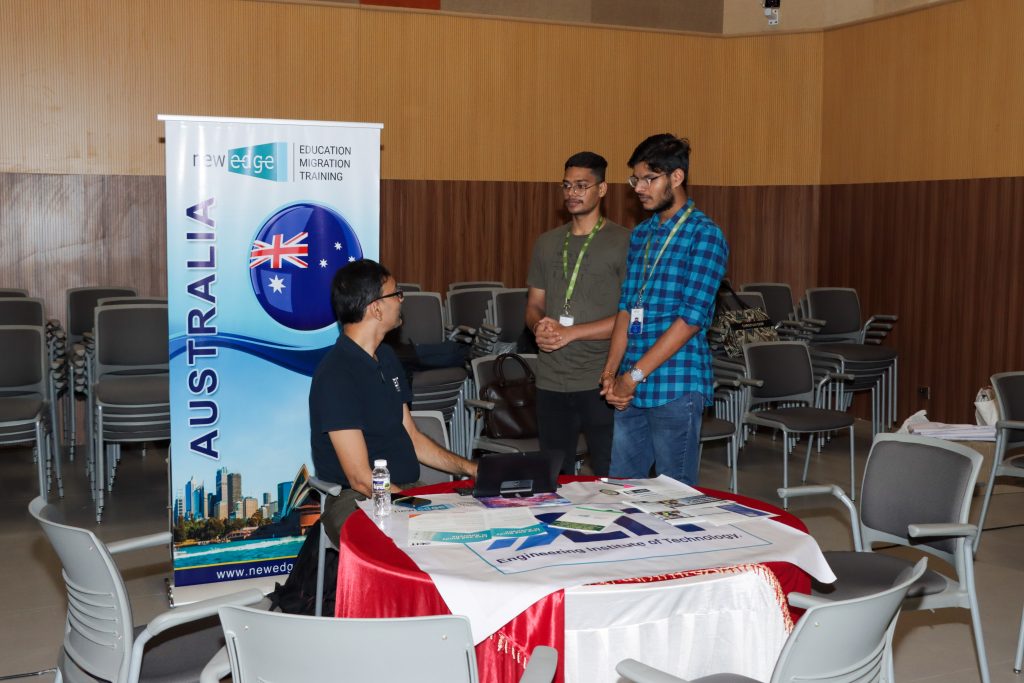
The Directorate of International Relations & Higher Studies (IR&HS) hosted the Education Fair on Wednesday, October 11, 2023, to provide meticulous guidance on higher education in universities and programmes across the globe. The event featured major universities from USA and UK, including the University of Missouri St Louis, USA, University of Greenwich, UK; Coventry University, UK; California State University, USA; York University, Canada and many more.
The event provided students with a compass for their educational journey. Expert advisors and counsellors offered insights into courses for higher studies, and scholarships, and guided them toward the right choices for their future. From business and engineering to arts and sciences, the expo showcased the diversity of worldwide educational opportunities.
The SRM University-AP’s education fair was a source of inspiration for students, motivating them to dream big and aim high. The education expo was more than just an event; it promised a brighter future, a world of opportunities, and a global perspective on education.
Continue reading →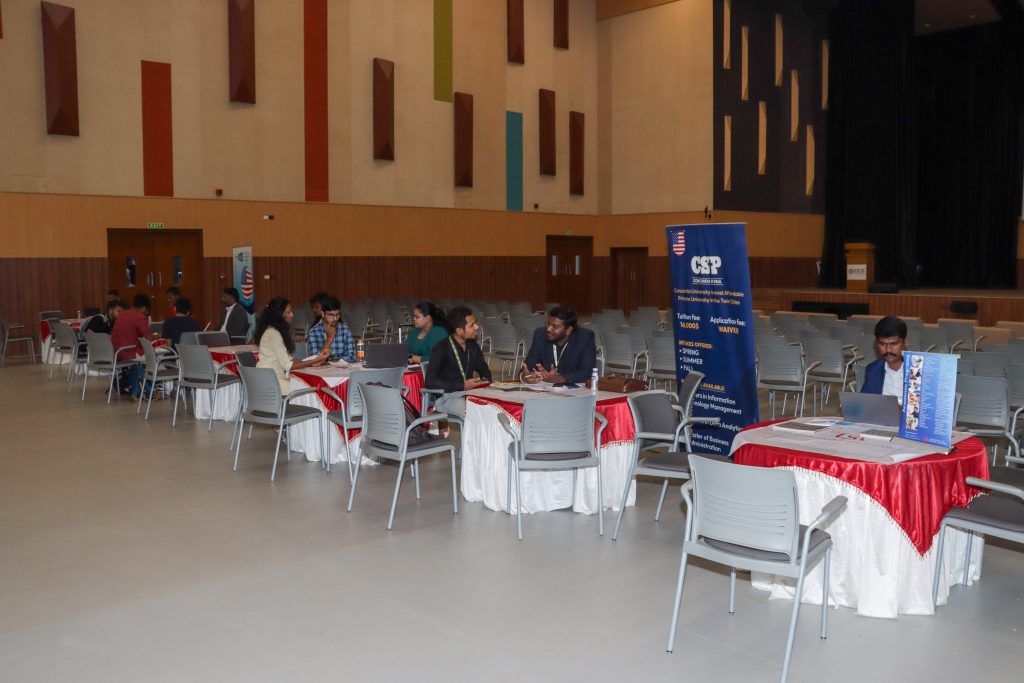
- SRM University-AP Shines at FUSIONX-2023 October 9, 2023
The second-year BTech team of SRM University-AP achieved remarkable success at the prestigious National Level Technical Competition FUSIONX-2023. The two-day event was held at S R Gudlavelluru Engineering College (SRGEC), where our team’s exceptional skills and knowledge earned them well-deserved laurels. It is a testament to our students and faculty’s hard work and dedication!
Three of our students, Mr Sri Sai Manikanta, Mr Ashwanth, and Mr Ajit Kumar, were victorious in the Drone Extreme Challenge and received a cash prize of Rs. 2500. This technical event was held on September 14 and 15, 2023, and was organised by the Department of the Internet of Things (IoT) at SRGEC in collaboration with the Drone Club, ISF and ADYUGA EdTech Solutions.
Hearty congratulations to the champions on this noteworthy accomplishment!
Continue reading → - IASc President Delivers the UDL and Inaugurates Centre of Excellence September 29, 2023
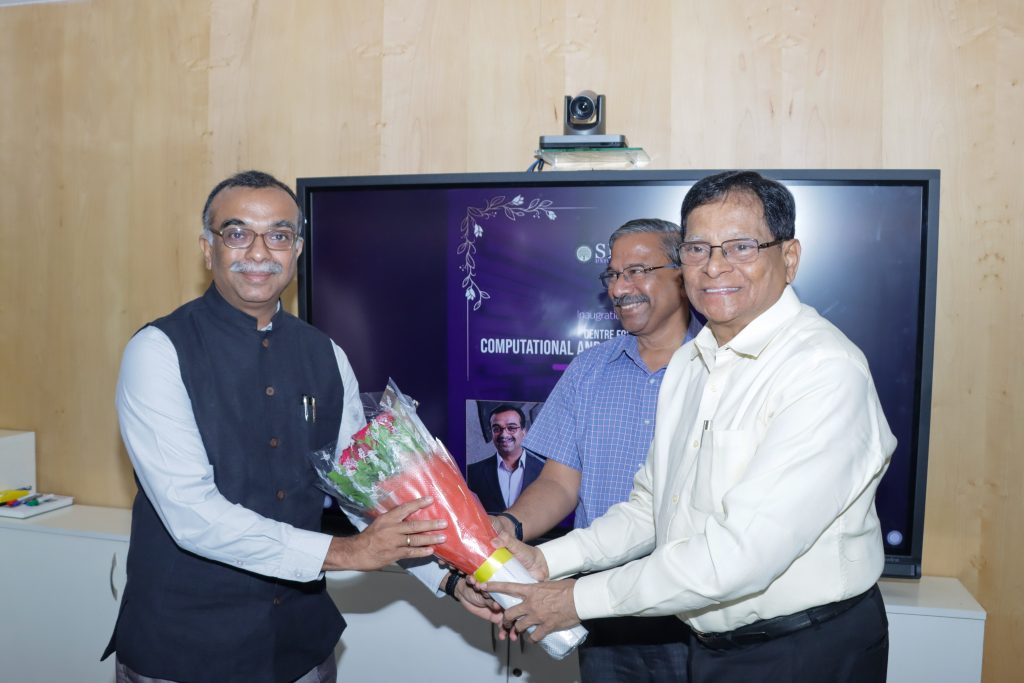
SRM University-AP welcomed Prof. Umesh V Waghmare, President – Indian Academy of Sciences, Bengaluru on the momentous occasion of the inauguration of the Centre for Computational and Integrative Sciences and as the keynote speaker of the 16th University Distinguished Lecture held on September 27, 2023. The institute launched its eighth Centre of Excellence that embraces true interdisciplinary collaboration in alignment with the mission of SRM University-AP. Prof. Waghmare acknowledged the tremendous research infrastructure of the institute that intensifies and cultivates research, innovation, and entrepreneurial spirit on campus. The Centre which is a dedicated platform for computational research, was launched in the presence of Prof. V S Rao, Advisor; Dr R Premkumar, Registrar; Prof. Ranjit Thapa, Dean-Research, Dr. Mahesh Kumar Ravva, Co-ordinator of the center, and faculty of SRM University-AP.
Prof. Waghmare also delivered an insightful session on “How Materials Shape Technologies: Past, Present and Future” as part of the 16th edition of the University Distinguished Lecture Series organised by the institute. “Material Science is an interdisciplinary field of science that witnesses the confluence of natural sciences and engineering. The history of materials (its processing) influences its structure and thus the material’s properties and performances. These diversified materials have influenced humankind significantly from the beginning of our civilization to the 21st century”, stated Prof. Waghmare in his lecture. He also expounded on how materials have been the key to technological revolutions, the impact of Quantum Physics in Material Science and combating present challenges to energy and environment through modern materials and technologies.
Prof. V S Rao, Advisor stated that the primary aim of the University Distinguished Lecture series is to inspire research scholars and students to engage in innovative initiatives that contribute to the comprehensive advancement of our nation. The lecture successfully concluded with a Q&A session and a vote of gratitude. A memento was presented to Prof. Umesh Waghmare as a token of appreciation by Dr R Premkumar.
Continue reading → - SRM AP Educators Accredited with Cambridge Certification September 26, 2023
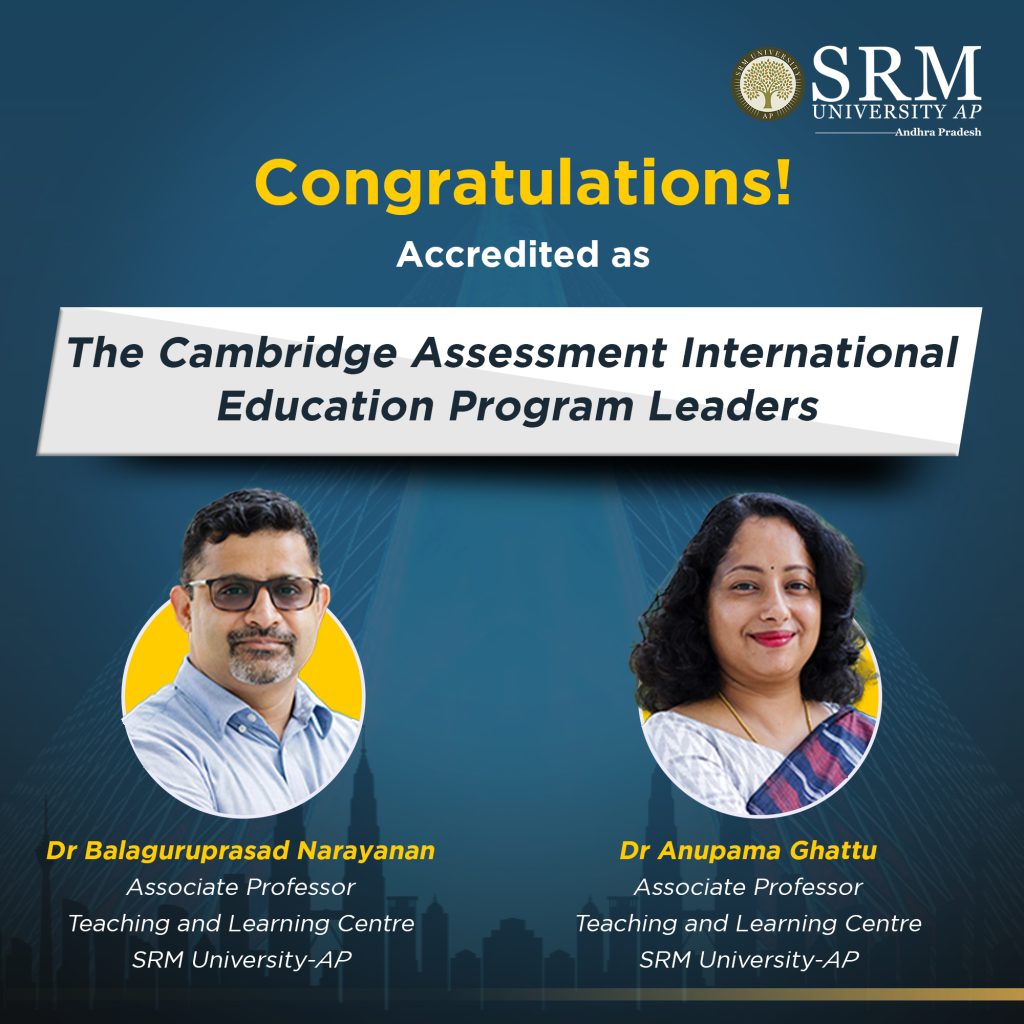
SRM University-AP educators, Dr Balaguruprasad Narayanan and Dr Anupama Ghattu from the Teaching and Learning Centre are now accredited facilitators under The Cambridge Assessment International Education Program Leaders. The Duo have earned their specialisations in the Teaching and Learning Program & Teaching with Digital Technologies Program respectively.
The certification will enable the educators to provide the faculty and students with specialised competency in teaching and learning mechanisms, it will also facilitate student learning experiences. Following this accreditation, the programme leaders through TLC are planning to guide SRM University-AP faculty members for International Cambridge Certification in one of the above-mentioned programmes of their choice.
Congratulations to Dr Ghattu and Dr Narayanan!
Continue reading → - Skills Diagnostics Assessments For AY 2023-24 September 26, 2023
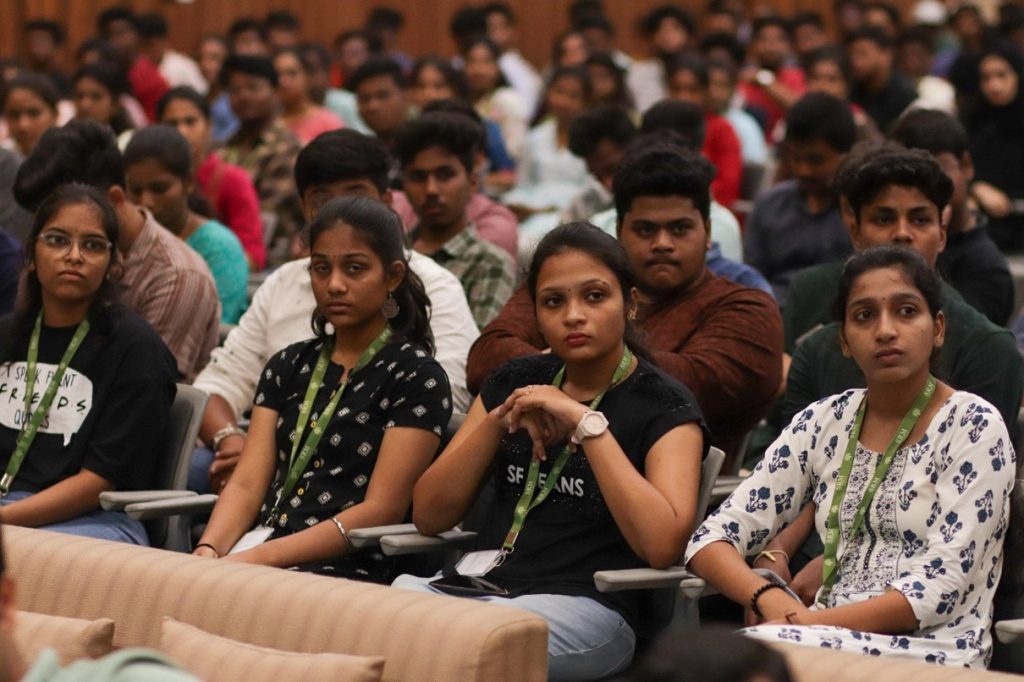
The Teaching and Learning Centre along with The Directorate of Corporate Relations & Career Services conducted Diagnostic Skills Assessments for Freshman undergraduate students for AY 2023-24 from August 17, 2023 – August 19, 2023, during the Freshman Orientation Programme.
The main objective of the diagnostic assessments was to identify individual students’ knowledge, skills, strengths, and potential areas of growth in English, Aptitude, Math, C Programming, Physics, Chemistry and Biology. It is primarily used to identify and address learning gaps to meet their learning needs. Furthermore, it will also help in tracking student achievements throughout their learning process. The assessment data will be used for differentiated instruction among other techniques in the classroom to foster student learning.
Continue reading → - ICSSR Sanction for Research Project on PM Krishi Sinchai Yojana September 26, 2023
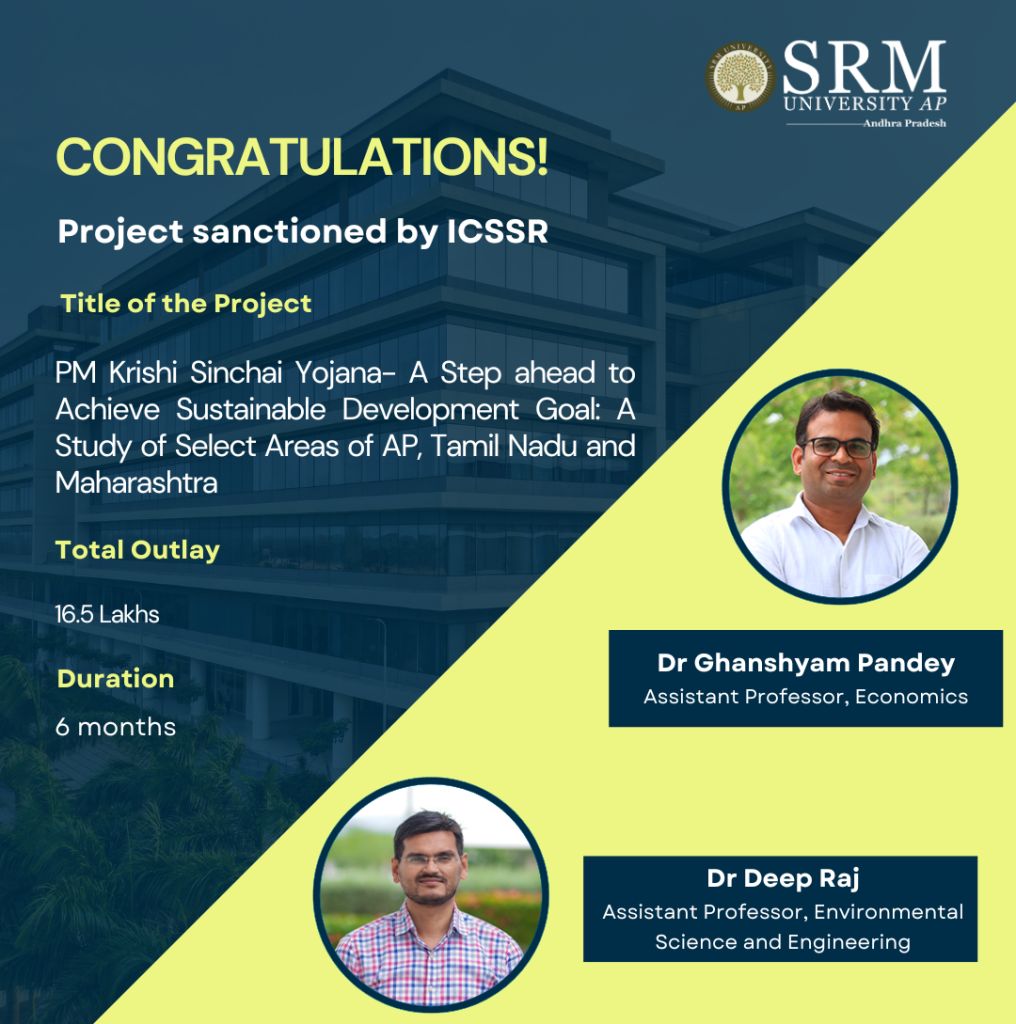
SRM University-AP takes pride in the achievements of its students and faculty. Dr Ghanshyam Pandey, Assistant Professor, Department of Economics and Dr Deep Raj, Assistant Professor, Department of Environmental Science and Engineering were sanctioned a project by the Indian Council of Social Science Research, New Delhi (ICSSR). The research project titled, “PM Krishi Sinchai Yojana- A Step Ahead to Achieve Sustainable Development Goal: A Study of Select Areas of AP, Tamil Nadu and Maharashtra” was sanctioned a total outlay of 16.5 Lakhs for a period of 6 months.
Abstract
Agriculture in India is dominated by smallholders. Yet only about 55% of India’s agricultural land is irrigated. The frequent occurrence of extreme climate events such as drought and heat are some of the main reasons for low agricultural productivity, food insecurity, and persistent poverty in developing nations. In this respect, irrigation plays a significant role in addressing climate change. However, irrigation costs are also very high for small-scale farmers because of their low incomes. Therefore, they do not have the resources to irrigate 100% of their land. In this context, PMKSY is a step towards resolving this problem in India and was introduced by the NDA government in 2015 by Har Khet Ko Pani. Therefore, the present study will examine the coverage, impact, adaptation and constraints of PMKSY in the Indian states of Andhra Pradesh, Tamil Nadu and Maharashtra.
Congratulations on this remarkable achievement!
Continue reading → - Faculty Duo Publish a Critical Analysis and Research on Cyberbullying September 26, 2023
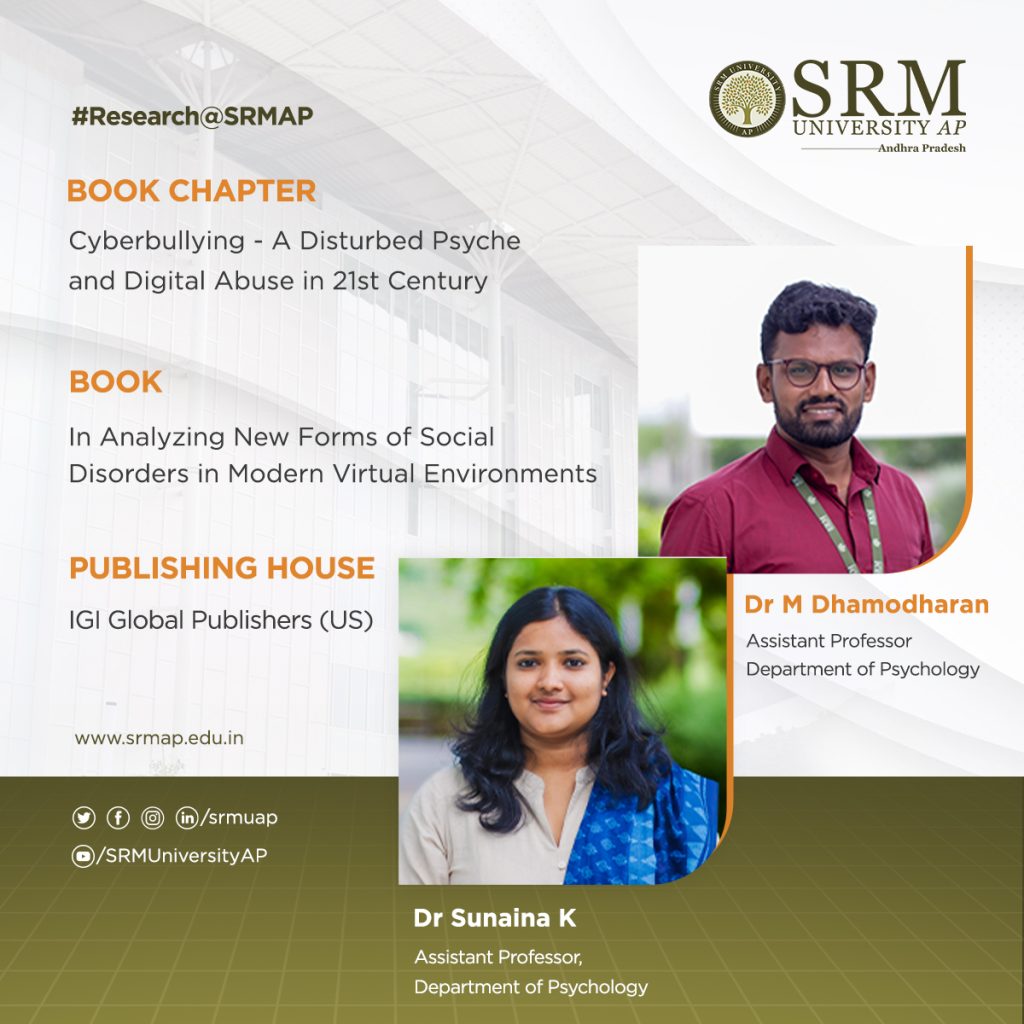
In the digital era, where technology dominates over communication, connection and social relationships, the staggering rise of cyberbullying proves to be detrimental to the social and mental psyche of people. The limited research present regarding the crisis fails to provide sufficient data to critically analyse and initiate policies to combat the same. In this regard, Dr Dhamodharan M and Dr Sunaina K, faculty from the Department of Psychology have conducted insightful research into cyberbullying, the role of technology and the challenges in tackling the act. The faculty duo has published a book chapter titled “Cyberbullying – A Disturbed Psyche and Digital Abuse in 21st Century” in the book In Analyzing New Forms of Social Disorders in Modern Virtual Environments in IGI Global Publishers (US).
Abstract
Cyberbullying is ‘a violent, planned act carried out by a group or specific, using electronic forms of communication, frequently and over time in contradiction of a victim who cannot easily protect him or herself.’ (Smith et al., 2008). According to the UNICEF and Broadband search survey 2023, around 36.5 out of a hundred people feel they were cyberbullied at least once in life, and seventeen percent of people experienced cyberbullying in the last month. 60 out of 100 adolescents experienced cyberbullying. Seventy percent of youths have reported perpetrators. Sixteen percent of women have been stalked at least once in life. 1 in 19 men have been stalked at some point. Fifty percent of LGBTQ people experience cyberbullying. Girls face cyberbullying more than boys. Around 36 percent of girls experience cyberbullying, whereas 24 percent of boys experience cyberbullying. Eighty-three percent of the victims who experienced online bullying also experienced physical bullying. Around 42 percent of the people experience cyberbullying on Instagram, followed by Facebook at 37%, Snapchat at 31%, WhatsApp at 12%, YouTube at 10%, and Twitter at 9%. Cyberbullying refers to using digital technologies such as cyberspace, societal broadcasting platforms, direct messaging, and email to bother, intimidate, or harm others.
This chapter provides an indication of cyberbullying, including its definition, incidence, and impact on individuals and society. Firstly, the chapter reviews the existing research on cyberbullying, exploring its different forms and characteristics and the psychological and social consequences for both victims and perpetrators. Secondly, the role of technology in facilitating and exacerbating cyberbullying is also examined, focusing on the anonymity and distance that online platforms provide. Thirdly, legal and ethical considerations surrounding cyberbullying including the challenges of enforcing laws and policies online are explored. Finally, the chapter highlights the importance of a comprehensive and collaborative approach involving parents, educators, policymakers, and online platforms to address cyberbullying.
Implications
Cyberbullying is a pervasive problem with significant and long-lasting consequences for people, their families, and society. It is essential to address cyberbullying thoroughly and implement effective prevention measures to create a more secure and respectful online environment. Cyberbullying can have detrimental effects on its victims, leading to feelings of helplessness, mental health issues, trouble with schoolwork, and even self-harm or suicide. In addition, cyberbullying affects the social fabric of groups, and trust, and impedes the proper growth of individuals, especially children and adolescents. Cyberbullying has a shocking prevalence worldwide, and it is spreading over to people silently. Traditional bullying differs from cyberbullying; it occurs to the victims in various forms and levels.
Continue reading →


